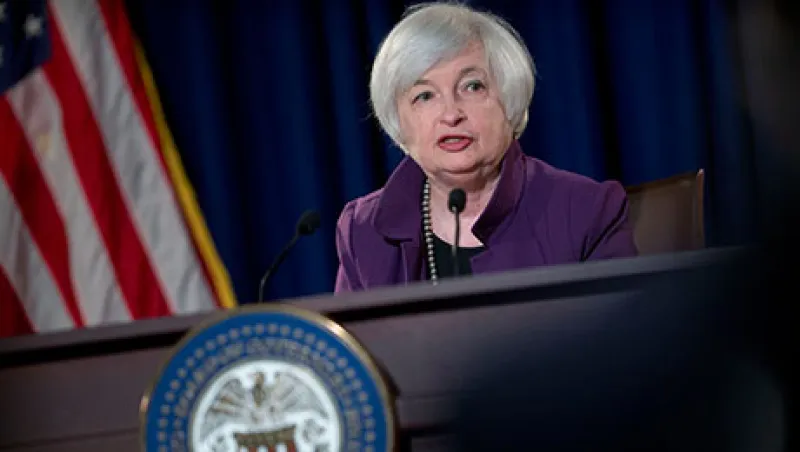With the Federal Open Market Committee today sticking to "its view that the current 0 to 1/4 percent target range for the federal funds rate remains appropriate” but still positioning itself later this year to raise interest rates for the first time in a decade, markets are increasingly focused on how the Federal Reserve’s new rate regime will take shape. Over the past few weeks, we have gotten more clues about this new regime and when it may begin. Here are four questions that are likely weighing on the Fed’s policy.
What does the FOMC need to see before normalizing interest rates?
Federal Reserve chair Janet Yellen has been very clear about the preconditions for normalizing rates. First, the labor market needs to continue creating jobs and reducing slack. Job gains of more than 200,000, labor force participation rates trending upward and signs of wage growth are key indicators. As for inflation, the FOMC has to be “reasonably confident” that it will return to the Fed’s 2 percent target in the medium term — about three to five years. This does not mean that inflation has to actually be within the Fed’s target range — just clearly headed in that direction. Coming off the longest stretch of sub-2 percent inflation in nearly 50 years, we expect the committee to want to ensure that any upward trend in inflation is both sustained and strong before moving forward.
At what pace will normalization proceed?
During the most recent tightening cycle, the FOMC mechanically raised rates by a quarter of a percent at each meeting. Prominent Fed representatives continue to hammer away at what they call a misguided premise that the coming tightening cycle will resemble previous ones. The Fed has stressed that this cycle will be slow and gradual and may include pauses along the way.
Fed vice chair Stanley Fischer has recently spoken about the slow and gradual pace of normalization. In fact, at a recent lecture at the Interdisciplinary Center Herzliya, a college in a suburb outside Tel Aviv, Fischer seemingly went out of his way to emphasize this point: “You say ‘liftoff’ and you think of rockets that go into orbit after ten seconds. That’s not what we are talking about. ‘Liftoff’ says we’re going straight up with the interest rate. Well, we’re going up with the interest rate, then along, and then another little jump. That’s not liftoff; that’s crawling.”
How much rate normalization will be enough?
The minutes of recent FOMC meetings reveal that the group has spent considerable time deliberating the neutral rate of policy. The accounts of these discussions portray a general consensus around terminal rates in the future being lower than in the past. Fed forecasts have been consistent with this as well. The historical average for long-run policy is around 4.25 percent. The March round of rates forecast by FOMC members had the consensus long-term policy rate at 3.75 percent, however.
When will the FOMC embark on its new “slow and low” regime?
Nearly all FOMC members have spoken openly about their desire to begin normalization in 2015. The resolve to take policy action this year was certainly tested by a sluggish first quarter. The FOMC’s inclination toward action in 2015 seems to have remained intact, however. At the April meeting 15 of 17 participants still expected an increase this year.
Taking these points into account, I expect the economic data to strengthen and provide an opening for a rate move in December. This initial increase will be followed by a pause for a meeting or two in 2016 to allow markets to fully digest the change in regime. This pattern is contingent on labor market improvement and stabilized inflation in the U.S. The economy will continue to add more than 200,000 jobs monthly. More important, there are growing signs of diminishing slack: The participation rate is beginning to trend upward, and some measures of wage growth are moving higher as well. Some measures of inflation have already moved toward the Fed’s 2 percent objective, but the Fed’s favored measure, core personal consumption expenditures (PCE), has lagged those. I expect core PCE to stabilize over the summer and turn upward sometime in the fall.
Shehriyar Antia is the founder and chief market strategist at Macro Insight Group, an investment strategy firm based in New York. Prior to founding MIG, he worked on quantitative easing programs and monetary policy as a senior market analyst at the Federal Reserve Bank of New York.
Get more on macro .






